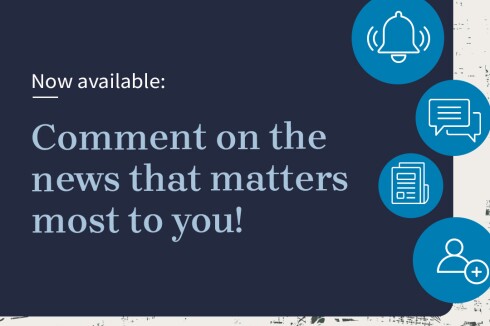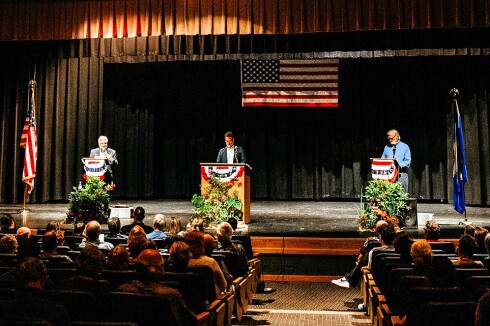With Republicans winning the White House and the U.S. Senate and control of the U.S. House still not officially determined as of Nov. 13 but favoring Republicans, attention turns to what the party will do with that power. Among the hot-button topics are agriculture policy, nutrition and conservation — all of which involve the U.S. Department of Agriculture.
Many have looked to Project 2025 for answers. Created by the conservative Heritage Foundation, with buy-in from more than 100 additional conservative groups, the project bills itself as a "presidential transition project" and calls itself officially "Mandate for Leadership 2025: The Conservative Promise," building off its first "Mandate for Leadership" published in 1981 before President Ronald Reagan's first term in office. The document played a large role in the Reagan administration's policies. Project 2025 is the ninth such election-cycle document produced by the Heritage Foundation.
ADVERTISEMENT
Republicans, including former President and current President-elect Donald Trump, have repeatedly distanced themselves from Project 2025, even though several contributors to the 920-page conservative manifesto served in Trump's first administration or are now on the shortlist for appointees in a second Trump term.
When asked by Agweek about his stance on the agricultural policy of Project 2025, U.S. Rep. Brad Finstad , a farmer and a Republican who represents Minnesota's 1st Congressional District, said he didn't have one.
"I've never seen it, never read it, and I think it's one of the biggest misinformation slash make a political issue out of nothing case that we've seen," Finstad said of Project 2025. "Quite frankly, the reason that the Democrats keep bringing (Project 2025) up is because they know they have a lot to be worried about. We have an economy that's struggling. We have an ag trade deficit. We have farmers that are hurting right now, and they don't have solutions, and this has all happened under their watch."
The agriculture chapter of Project 2025 was written by Daren Bakst, a conservative columnist and director of the Center for Energy and Environment at the Competitive Enterprise Institute, which is a think tank that advocates for government deregulation.
Bakst did not respond for requests for comment for this article.
"There are a lot of conservative columnists that write a lot of things," Finstad said. "It is insincere, and it is quite frankly a disservice to the general public to directly try to associate politicians with things that outside groups may or may not have wrote, or may or may not support."
Project 2025 lays out some sweeping changes to existing ag policy. Here are some examples of the policies suggested in the document. To read for yourself, visit: project2025.org/policy.
ADVERTISEMENT
Repeal the Agriculture Risk Coverage (ARC) and Price Loss Coverage (PLC) programs
"Farmers eligible to participate in ARC or PLC are generally already able to purchase federal crop insurance, policies that protect against shortfalls in expected revenue whether caused by lower prices or smaller harvests," writes Bakst. "The ARC program is especially egregious because farmers are being protected from shallow losses, which is another way of saying minor dips in expected revenue."
Cut government subsidies for crop insurance
"On average, taxpayers cover about 60 percent of the premium cost for policies purchased in the federal crop insurance program ," writes Bakst. "One of the most widely supported and bipartisan policy reforms is to reduce the premium subsidy that taxpayers are forced to pay. At a minimum, taxpayers should not pay more than 50 percent of the premium. After all, taxpayers should not have to pay more than the farmers who benefit from the crop insurance policies."
End the sugar program, which manages U.S. sugar production to keep prices high
"The federal government should not be in the central planning business, and the sugar program is a prime example of harmful central planning," writes Bakst. "Its very purpose is to limit the sugar supply in order to increase prices. The program has a regressive effect, since lower-income households spend more of their money to meet food needs compared to higher income households."
Move USDA food and nutrition programs to the Department of Health and Human Services
"Because means-tested federal programs are siloed and administered in separate agencies, the effectiveness and size of the welfare state remains largely hidden," writes Bakst. "There are means-tested food-support programs in the USDA (specially FNS), whereas most means-tested programs are at the Department of Health and Human Services (HHS). All means-tested antipoverty programs should be overseen by one department—specifically HHS, which handles most welfare programs."
Reform SNAP by re-implementing work requirements, reform WIC and state voucher system and return to the original purpose of schools meals
"To serve students in need and prevent the misuse of taxpayer money, the next Administration should focus on students in need and reject efforts to transform federal school meals into an entitlement program," writes Bakst.
Constrict or eliminate the Conservation Reserve Program
"Farmers should not be paid in such a sweeping way not to farm their land," writes Bakst. "If there is a desire to ensure that extremely sensitive land is not farmed, this should be addressed through targeted efforts that are clearly connected to addressing a specific and concrete environmental harm. The USDA should work with Congress to eliminate this overbroad program."









